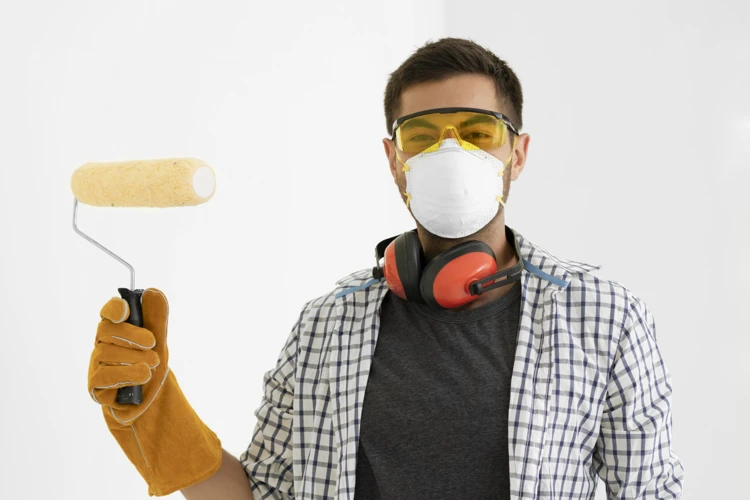In the quest to refresh our homes with a new coat of paint, safety is a critical consideration that often goes unnoticed. House painting safety encompasses more than just the avoidance of spills and drips; it includes being vigilant about fire prevention. A successful painting project is one that not only looks good but is also completed without accidents.
Understanding the Risks
Most homeowners may not realize that painting can be a fire risk. The products used, such as solvents and cleaners, can be highly flammable. Understanding these risks is the first step towards mitigating them, ensuring a painting job doesn’t turn into a fire hazard.
Importance of Fire Prevention
Fire prevention tips are not just for large industrial settings; they are equally important during a residential paint job. Implementing fire safety measures is vital to protect your property and loved ones from potential dangers associated with house painting.
Comprehensive Fire Prevention Tips
Prioritizing safety can significantly reduce the likelihood of a fire breaking out. Let’s delve into the essential steps to ensure your painting project is as safe as possible.
Identifying Common Painting Fire Hazards
- Flammable liquids: Paints, thinners, and solvents can ignite if exposed to sparks or open flames.
- Combustible materials: Rags soaked with flammable substances can spontaneously combust if not handled properly.
- Improper ventilation: Fumes can accumulate and create an explosive atmosphere.
Fireproofing While Painting
Minimizing fire risks involves careful preparation. Cover electrical outlets, switch off appliances that could cause sparks, and ensure that your work area is well-ventilated to disperse any flammable fumes.
Safe Painting Practices for Home Projects
Adopting safe painting practices is essential. Use flame-resistant drop cloths, store flammable materials away from heat sources, and never leave paint products unattended. Always keep a fire extinguisher within reach.
Flammable Paint Safety Measures
The type of paint and how it’s handled can make a significant difference in your project’s safety profile.
Choosing the Right Materials
Opt for water-based paints when possible, as they are less flammable than oil-based alternatives. If you must use flammable paints, do so with caution and awareness of the risks.
Proper Storage and Handling
Store flammable paints in a cool, dry place, away from any ignition sources. Ensure that containers are sealed tightly after use to prevent the release of flammable vapors.
Fire Safety During Renovation
Any renovation, including painting, requires a focus on fire safety to prevent mishaps.
Preventing Fires in Home Projects
It’s crucial to maintain a clean workspace, free from clutter that could fuel a fire. Dispose of used rags and empty paint cans promptly and safely to minimize risks.
Dealing with Paint Fumes Safely
Paint fume safety is an often-overlooked aspect of fire prevention. Ensure adequate ventilation to avoid the buildup of explosive fumes. Use fans and keep doors and windows open where possible.
Implementing Fireproofing Techniques
Integrating fireproofing into your painting routine can significantly enhance safety. Let’s explore how this can be achieved.
Protective Coatings and Additives
Today, many paints come with fire-retardant properties. Consider using these products to add an extra layer of protection to your home. Fire-resistant additives can also be mixed into standard paints for a similar effect.
Safe Application Methods
When applying paint, use brushes and rollers instead of spraying whenever possible, as spraying can produce a fine mist that is more susceptible to ignition. Follow the manufacturer’s instructions for safe use and disposal.
Residential Painting Fire Safety
Ensuring residential painting fire safety is a shared responsibility. Whether you’re a DIY enthusiast or considering hiring professionals, being aware of best practices is key.
Best Practices for DIY Enthusiasts
DIY painters should educate themselves on the potential risks and safe handling of painting materials. Take the time to learn about the proper use of equipment and the importance of maintaining a tidy workspace.
When to Call Professionals
If you’re unsure about handling flammable materials or the scope of your project is extensive, it might be wise to call in professional painters. They come equipped with the expertise to manage risks effectively.
Conclusion
As we wrap up our guide on fire prevention during house painting, remember that diligence and preparation are your best defenses against potential dangers.
Final Checklist for Fire Safety
Before you begin, review your fire prevention checklist: choose the correct materials, plan for proper ventilation, and ensure you have the right safety equipment on hand.
When undertaking a house painting project, fire prevention should be a top priority. Many homeowners may not realize the potential hazards that come with storing paint and using various painting techniques. To ensure your safety and the protection of your property, we have compiled essential information on this topic. Learn about the risks and how to mitigate them by reading our article on paint storage fire risk. Additionally, personal protective equipment is crucial, so don’t overlook the importance of safety glasses while painting. Lastly, for those who will be using spray paint, our guide on spray paint safety is an invaluable resource to keep you and your surroundings safe. Remember, a little precaution goes a long way in preventing potential disasters during your home improvement endeavors.
Maintaining a Safe Environment Post-Painting
Even after the paint has dried, continue to practice safety. Store leftover materials securely and remain vigilant about fire risks in your newly painted space. Safety is not a one-time consideration; it’s an ongoing commitment.


